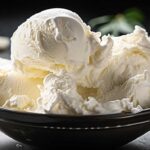Ice Cream Recipes
Why Ice Cream Headache

Have you ever been curious about why consuming our beloved cold desserts often leads to severe headaches?
Well, we’ve got the scoop on the science behind ice cream headaches. In this article, we’ll delve into the role of nerves and the factors that contribute to these painful sensations.
But don’t worry, we’ve also got some tips to prevent and soothe those pesky ice cream headaches.
So, join us as we explore the fascinating world of frozen treat-induced pain.
Key Takeaways
- Ice cream headache, also known as a brain freeze, is caused by the rapid cooling and rewarming of blood vessels in the roof of the mouth.
- The exact cause of ice cream headache is believed to be the sudden temperature change in the mouth.
- Eating or drinking cold foods too quickly can increase the likelihood of experiencing an ice cream headache.
- Ice cream headaches are generally harmless and do not require medical treatment.
The Science Behind Ice Cream Headaches
We experience ice cream headaches due to the rapid cooling of the palate. This phenomenon, also known as brain freeze, occurs when cold substances come into contact with the roof of our mouth.
The physiological response to this sudden temperature change is what causes the intense pain. When the cold substance touches the roof of our mouth, the blood vessels in that area constrict. This constriction is the body’s way of protecting itself from the extreme cold.
However, once the cold substance is removed, the blood vessels quickly dilate, causing a rush of blood to the area. It’s this rapid expansion of blood vessels that triggers the intense headache. The pain typically lasts for a few seconds to a minute, but it can be quite uncomfortable.
Understanding the Role of Nerves
To understand the role of nerves in ice cream headaches, let’s delve into how our sensory neurons react to the sudden temperature change. When we take a bite of ice cream, the coldness stimulates the nerves in our mouth and throat, triggering a rapid response in our nervous system.
Here is a breakdown of what happens:
- Nerve response: The cold temperature of the ice cream causes the blood vessels in our mouth and throat to constrict. This constriction activates the trigeminal nerve, which is responsible for transmitting sensations from the face to the brain.
- Pain perception: As the trigeminal nerve sends signals to the brain, it interprets the sudden temperature change as pain. This perception is what we commonly refer to as an ‘ice cream headache’ or a ‘brain freeze.’
- Duration: Ice cream headaches typically last for a few seconds to a minute, but the intensity can vary from person to person.
Understanding the role of nerves in ice cream headaches helps us appreciate the complex interplay between sensory neurons and pain perception.
Factors That Contribute to Ice Cream Headaches
Ice cream headaches can be influenced by various factors that contribute to their occurrence. Understanding these factors can help us manage and prevent ice cream headaches more effectively.
| Ice Cream Headache Triggers | Managing Ice Cream Headaches |
|---|---|
| Cold temperature | Eating slowly |
| Cold food or drinks | Avoiding brain freeze |
| Cold air | Drinking warm liquids |
One of the main triggers for ice cream headaches is exposure to cold temperatures. When we consume cold food or drinks or even breathe in cold air, it can cause a sudden constriction of blood vessels in our head, resulting in the sharp pain we experience. To manage ice cream headaches, it is helpful to eat slowly, allowing our bodies to gradually adjust to the cold temperature. Avoiding brain freeze by taking smaller bites and allowing our mouths to warm up the cold food can also help alleviate the discomfort. Additionally, drinking warm liquids after consuming cold treats can help normalize blood vessel dilation and reduce the intensity of ice cream headaches.
Tips to Prevent Ice Cream Headaches
One effective way to minimize the occurrence of ice cream headaches is by implementing certain preventative measures. To prevent brain freeze and avoid cold food discomfort, consider the following tips:
- Slow down: Eating ice cream or other cold foods too quickly can trigger brain freeze. Take small bites and savor each one, allowing your mouth to warm up the food before swallowing.
- Warm up your mouth: Before indulging in a frozen treat, try warming up your mouth by drinking a warm beverage or eating something warm. This can help acclimate your mouth to the cold temperature and reduce the likelihood of ice cream headaches.
- Avoid direct contact: When eating cold foods, try to avoid direct contact with the roof of your mouth. Instead, use your tongue to create a barrier between the cold food and your palate. This can help minimize the intensity of brain freeze.
Other Remedies for Ice Cream Headaches
There are several remedies that can help alleviate ice cream headaches. While the most effective way to prevent these headaches is to eat ice cream slowly and avoid exposing the roof of your mouth to extreme cold, there are alternative treatments and natural remedies that can provide relief if you do experience an ice cream headache.
One popular remedy is to press your tongue against the roof of your mouth. This helps to warm up the area and alleviate the pain.
Another option is to take a sip of a warm beverage, such as tea or coffee, to help regulate the temperature in your mouth.
Some people also find relief by applying pressure to the area between the upper lip and the nose, known as the philtrum. This can help to redirect the blood flow and reduce the intensity of the headache.
It’s important to note that these remedies may not work for everyone, and it’s always a good idea to consult with a healthcare professional if you experience frequent or severe ice cream headaches.
Frequently Asked Questions
How Long Do Ice Cream Headaches Typically Last?
Ice cream headaches typically last for a few seconds to a few minutes. To prevent them, try eating ice cream slowly, avoiding cold foods too quickly, or pressing your tongue against the roof of your mouth.
Can Eating Ice Cream Too Quickly Cause Other Health Problems?
Eating ice cream too quickly can lead to various health problems. When we consume it rapidly, our digestion process is disrupted, causing discomfort. To alleviate brain freeze, we can try warm liquids or pressing our tongue against the roof of our mouth.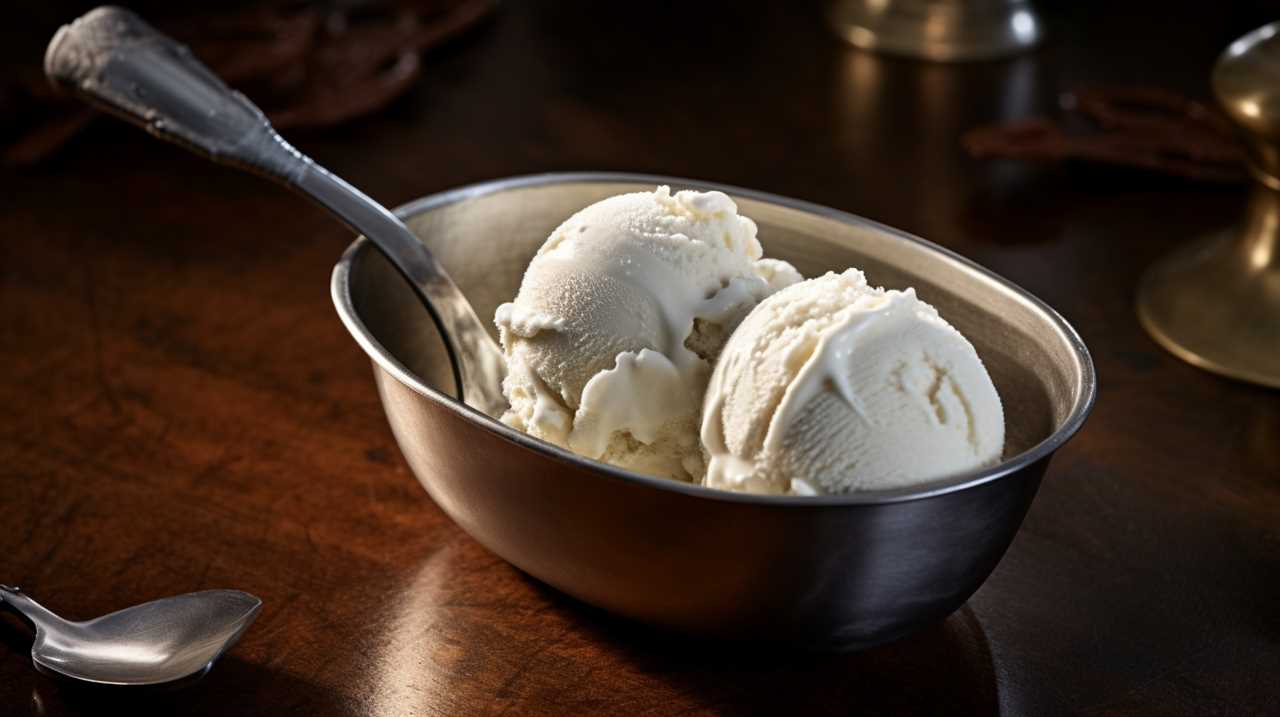
Are Some People More Prone to Ice Cream Headaches Than Others?
Some people may be more prone to ice cream headaches than others due to individual differences in sensitivity to cold temperatures. Understanding the causes of ice cream headaches can help in the prevention of these uncomfortable sensations.
Can the Temperature of the Ice Cream Affect the Likelihood of Getting a Headache?
The temperature of the ice cream plays a role in the likelihood of getting a headache, as colder temperatures can trigger brain freeze. Additionally, weather conditions may affect the occurrence of ice cream headaches.
Are There Any Long-Term Effects of Experiencing Frequent Ice Cream Headaches?
There can be long-term consequences of experiencing frequent ice cream headaches, such as chronic migraines. To prevent these headaches, it’s important to consume cold foods slowly and avoid sudden temperature changes in the mouth.
Are Ice Cream Headaches and Heartburn Related?
Yes, ice cream headaches and heartburn can be related. While ice cream headaches are caused by cold temperatures triggering nerves in the roof of the mouth, ice cream for heartburn relief can exacerbate heartburn symptoms in some individuals due to its high fat content.
Conclusion
In conclusion, it seems that the delightful indulgence of ice cream can bring about a rather unexpected consequence: the dreaded ice cream headache.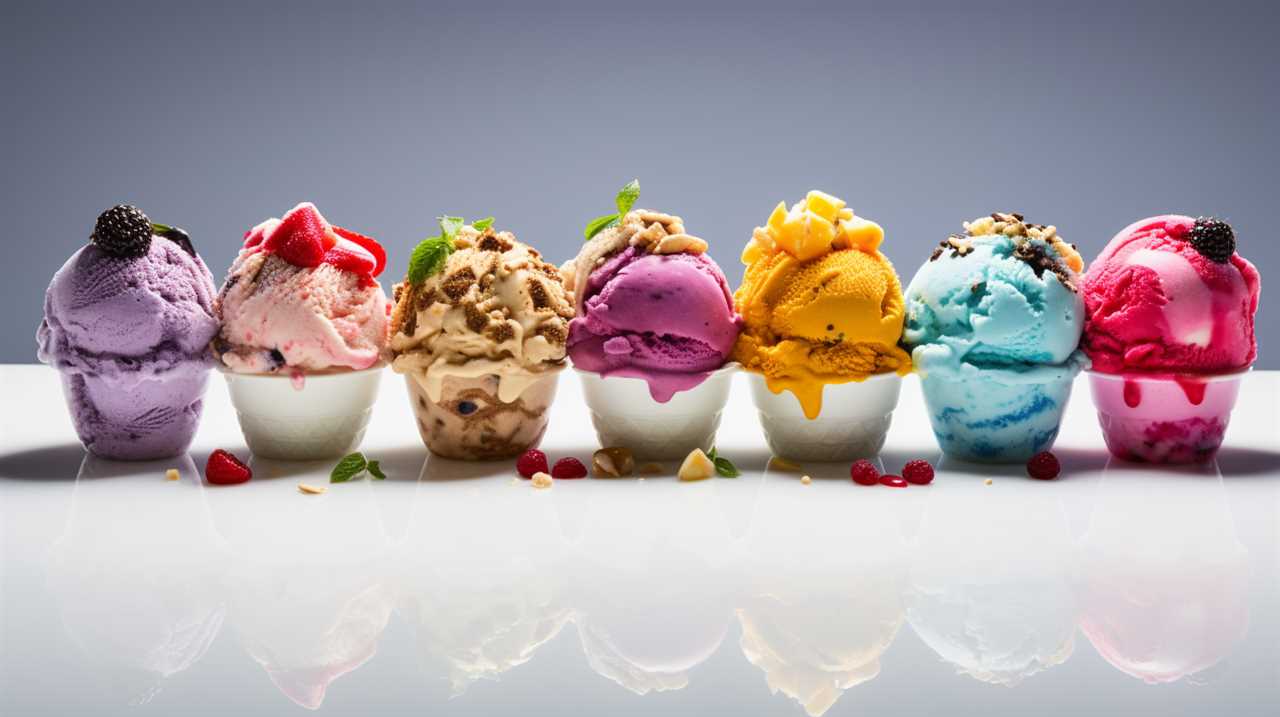
Despite our best efforts to understand the science behind it and prevent its occurrence, these headaches still manage to sneak up on us.
Perhaps it’s nature’s way of reminding us that even the most pleasurable experiences have their drawbacks.
So next time you savor that creamy treat, be prepared for the ironic twist of a freezing headache.
Beyond the realm of flavor and technique, Adriano recognizes the importance of sustainability and conscious consumption. His writing often explores eco-friendly practices within the ice cream industry, highlighting the use of locally sourced ingredients, reducing waste, and supporting ethical production methods.
Ice Cream Toppings
What Is an Ice Cream Taster

Greetings, ice cream aficionados! Ever wondered what it’s like to taste ice cream for a living? Worry no more, we’ve gathered all the necessary details for you.
In this article, we’re going to dive into the delicious world of ice cream tasting. We’ll explore the responsibilities, skills, and qualifications needed for this dream job, as well as the training process and the perks and challenges that come with it.
So, grab a spoon and get ready to discover the scoop on being an ice cream taster!
Key Takeaways
- An ice cream taster is responsible for evaluating the taste, texture, and quality of ice cream flavors, and they use taste testing and flavor profiling techniques.
- They must have a refined sense of taste and keen sense of smell, as well as training and education in food science or a related field. A formal certification in sensory evaluation is preferred.
- The training and education process for ice cream tasters involves comprehensive instruction, hands-on practice, and guidance from professionals to develop their sensory analysis skills.
- While there are challenges, such as the potential health issues from constant ice cream consumption, the benefits of being an ice cream taster include enjoying different ice cream flavors and appreciating the artistry and craftsmanship in ice cream making.
The Responsibilities of an Ice Cream Taster
Our responsibilities as ice cream tasters include evaluating the taste, texture, and quality of various ice cream flavors. To ensure accuracy and consistency in our evaluations, we employ a range of taste testing techniques and flavor profiling techniques.
When it comes to taste testing, we use our senses to assess the flavor intensity, sweetness, and balance of each ice cream sample. We pay close attention to the texture, noting whether it’s smooth, creamy, or too icy.
Furthermore, we evaluate the quality of the ingredients used, considering factors such as freshness and flavor complexity. Through our objective and analytical approach, we’re able to provide valuable insights that help ice cream makers create the most delectable and satisfying frozen treats.
The Skills and Qualifications Needed
To become an ice cream taster, we must possess certain skills and qualifications. While it may seem like a dream job, it requires more than just a love for ice cream.
First and foremost, a refined sense of taste is essential. Ice cream tasters must be able to detect subtle flavors and nuances in different varieties. Additionally, they must have a keen sense of smell, as aroma plays a significant role in the overall taste experience.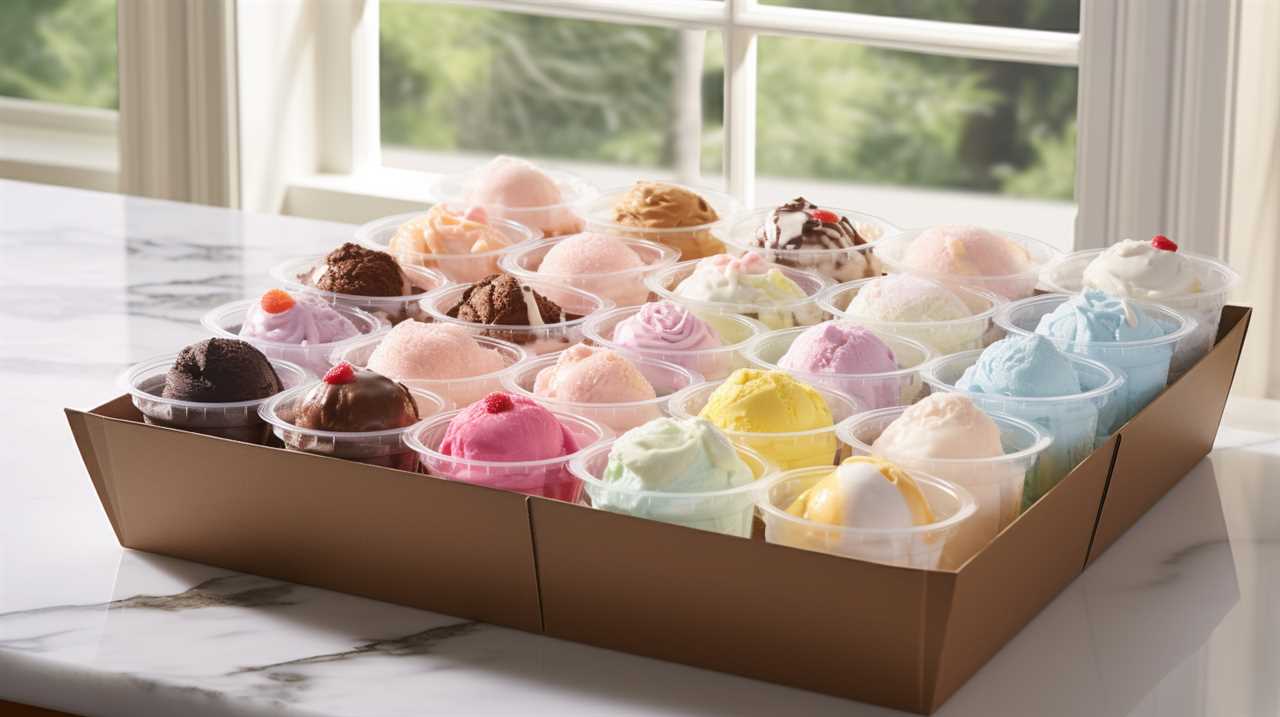
Training and education in food science or a related field is often preferred, as it provides a deeper understanding of the science behind ice cream production. Some companies may also require a formal certification in sensory evaluation.
Ultimately, a combination of natural talent, training, and a passion for ice cream is what sets a successful ice cream taster apart.
The Training and Education Process
One important step in becoming an ice cream taster is completing a comprehensive training and education process. The training techniques used in this process are designed to develop and refine the taster’s sensory analysis skills.
Through a combination of classroom instruction, hands-on practice, and guidance from experienced professionals, aspiring ice cream tasters learn to discern the subtle nuances in flavor, texture, and aroma that make each scoop unique. They’re taught how to evaluate the quality and consistency of the ice cream, identify any defects or inconsistencies, and provide valuable feedback to ensure that only the best products make it to market.
This training process equips ice cream tasters with the knowledge and expertise necessary to confidently assess and critique ice cream flavors, helping to maintain the high standards of the industry.
The Benefits and Challenges of the Job
Ice cream tasting offers both enjoyable benefits and unique challenges.
One of the main benefits of this job is the sheer pleasure of indulging in different flavors and varieties of ice cream. As an ice cream taster, we get to experience the delightful taste and creamy texture of various ice cream creations. This not only satisfies our taste buds but also allows us to appreciate the artistry and craftsmanship that goes into making each batch.
However, there are also challenges that come with the job. One of the biggest challenges is maintaining objectivity while tasting. It can be difficult to remain unbiased and evaluate each sample based on its merits alone. Additionally, constantly consuming ice cream can take a toll on our health, as it can lead to weight gain and other health issues.
Despite these challenges, the benefits of being an ice cream taster often outweigh the drawbacks, as we get to enjoy the sweet rewards of our labor.
The Future Outlook for Ice Cream Tasters
As we look ahead to the future of ice cream tasting, it’s important to consider the evolving trends and advancements in the industry. Here are some key factors that will shape the future outlook for ice cream tasters:
- Increasing demand for unique flavors and innovative combinations will require tasters to constantly explore new taste profiles and provide feedback on potential market hits.
- The rise of health-conscious consumers will lead to a growing demand for healthier alternatives, such as low-fat, dairy-free, and plant-based options. Tasters will play a crucial role in ensuring that these products meet the taste expectations of consumers.
- With the advent of technology, there may be a shift towards virtual tastings, allowing tasters to evaluate ice cream samples remotely. This will provide opportunities for tasters to work with a wider range of brands and products.
- Sustainability will become a key focus in the ice cream industry, and tasters will be expected to evaluate not just taste, but also the environmental impact of production processes.
The future of ice cream tasting is filled with exciting opportunities and challenges as the market demand and consumer preferences continue to evolve. Tasters will need to adapt and embrace these changes to stay relevant in the industry.
Frequently Asked Questions
How Many Different Flavors of Ice Cream Does an Ice Cream Taster Typically Sample in a Day?
On average, we sample a wide variety of ice cream flavors daily as tasters. Our role in product development allows us to provide valuable insights and feedback, ensuring the best flavors make it to market.
Is There a Specific Age Requirement to Become an Ice Cream Taster?
There’s no specific age requirement to become an ice cream taster, but there are certain qualifications and training required. We’ll explore the details and what it takes to become a professional ice cream taster.
Are There Any Dietary Restrictions or Allergies That Could Disqualify Someone From Being an Ice Cream Taster?
Dietary restrictions or allergies may disqualify potential ice cream tasters. Age requirements vary, but expertise in flavor profiling and analysis is essential. Salary range is typically competitive, reflecting the qualifications needed for this role.
What Is the Average Salary Range for Ice Cream Tasters?
The average salary range for ice cream tasters is highly dependent on factors such as experience, location, and employer. However, we can expect a competitive compensation package for this delicious job.
Is There a Certain Level of Expertise Needed in Terms of Flavor Profiling and Analysis to Become an Ice Cream Taster?
Flavor profiling techniques are essential for ice cream tasters. Training for ice cream tasting involves developing a refined palate to analyze and evaluate flavors. It requires expertise to discern subtle nuances and provide objective feedback.
Can an Ice Cream Taster Help Determine the Icy Taste of My Ice Cream?
Yes, an ice cream taster can certainly help determine the icy taste of your ice cream. They are trained to identify the specific texture and flavor components that may contribute to an icy consistency. If you want to know how to fix icy ice cream, consulting an expert taster could provide valuable insights.
Conclusion
In conclusion, being an ice cream taster is a dream come true for any dessert enthusiast.
The responsibilities, skills, and qualifications required for the job are crucial in ensuring the highest quality of ice cream.
While the training and education process may be challenging, the benefits of indulging in countless flavors and experiencing the joy of taste make it all worthwhile.
As the future outlook for ice cream tasters remains sweet, this job offers a delightful path for those seeking a delicious career.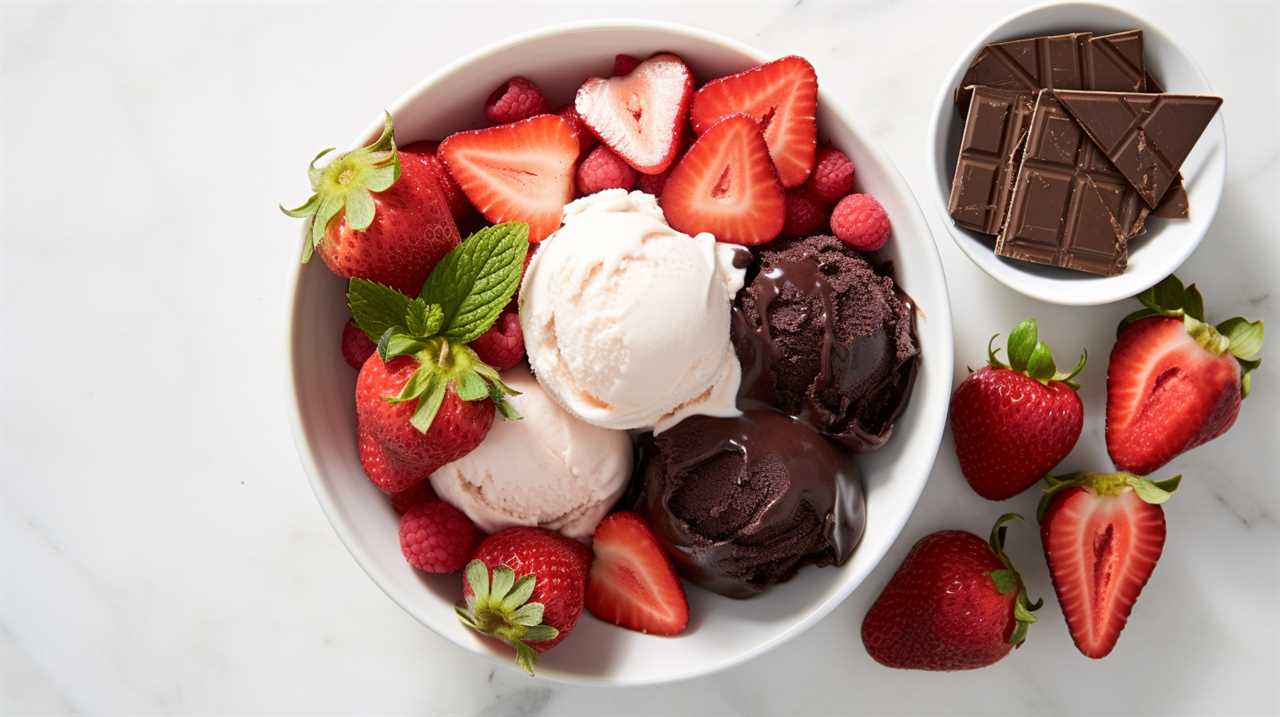
Beyond the realm of flavor and technique, Adriano recognizes the importance of sustainability and conscious consumption. His writing often explores eco-friendly practices within the ice cream industry, highlighting the use of locally sourced ingredients, reducing waste, and supporting ethical production methods.
Creative Ice Cream Recipes
Delicious Ice Cream Cocktails For Summer

Overview Of The Concept
When the weather heats up, there’s nothing like a delicious ice cream cocktail to cool off! Summer drinks have always been popular, but now it’s time to take this classic concept to the next level. Ice cream cocktails are a great way to add an extra dose of fun and flavor to your summer drinks. Not only can you create some incredibly tasty alcoholic desserts, but you can also explore a variety of flavors combinations – from craft recipes to more traditional options. We all know that when it comes to summer drinks, everyone has different tastes. That’s why we’ve come up with a variety of recipes that are sure to please any palate. From creamy parfaits to boozy shakes, these ice cream cocktails will satisfy even the most discerning drinker. Plus, each recipe offers something special for those who want something a little special in their summer drinks. So whether you’re looking for something light and refreshing or something bold and daring, these ice cream cocktails have got you covered. Get ready for some truly unforgettable summer drinks that will make your taste buds sing! Now let’s take a look at all the amazing recipes we have in store for you…Recipes For Different Tastes
There’s no one-size-fits-all when it comes to ice cream cocktails. Everyone has their own unique tastes and preferences, so why not take advantage of that? From fruity flavors to creamy concoctions, there are plenty of recipes out there to explore. Here are just a few of our favorite ice cream cocktail recipes for different tastes:- Strawberry Daiquiri Float: This fruity float combines the classic taste of strawberries with the sweetness of coconut rum and a splash of lime juice. Top off your daiquiri with a scoop of strawberry ice cream and you’ll be in heaven.
- Mango Margarita: This boozy treat is perfect for those who like their drinks on the sour side. Blending mango puree with tequila and a hint of mint, this Margarita is sure to tantalize your taste buds. Top it off with a scoop or two of mango ice cream for an extra special treat!
- Coconut Espresso Martini: For coffee lovers everywhere, this icy martini will hit the spot! Combining espresso, coconut vodka and a dash of vanilla extract, this martini will have you ready for summer in no time. Top it off with coconut ice cream for the ultimate frozen treat!
How To Make An Ice Cream Cocktail
Now that you’ve got your recipes sorted, it’s time to get mixing! Making an ice cream cocktail requires a few essential pieces of equipment and ingredients, but don’t worry – it’s all fairly straightforward. With the right tools and ingredients, you can whip up a delicious boozy treat in no time. So let’s get started! The two most important items when making an ice cream cocktail are a good blender and quality ice cream. A good blender will help ensure that all your ingredients blend together perfectly, while quality ice cream will give your drink that extra creamy texture. You’ll also need some alcoholic beverages like rum or vodka, as well as mixers like juice or soda for added flavor. Once you have all your equipment and ingredients ready, the rest is easy. Simply combine the desired amount of each ingredient in the blender and blend until everything is smooth. Then pour into glasses and top with a scoop or two of ice cream for a decadent frozen libation perfect for summer nights. If you’re feeling creative, try adding different fruits or spices to customize the flavor even more! With these tips in mind, you’re now ready to make some delicious ice cream cocktails this summer!Essential Equipment And Ingredients
Ready to make some delicious ice cream cocktails? Before you get started, it’s important to have the right equipment and ingredients on hand. From an ice cream maker to a cocktail shaker, we’ve rounded up all the essential items needed for creating the perfect summer treat. First, you’ll need an ice cream maker so that you can whip up your own frozen concoctions. An electric one is great if you’re looking for convenience, but you can also use a manual one if you prefer. Next, grab a cocktail shaker – this will help ensure that all your liquids and ingredients are properly mixed together. As for mixers, there are plenty of options out there. Stock up on various spirits like rum and vodka as well as different juices and syrups to add flavor and sweetness. You can also use flavored liqueurs or milkshake mixes if you want something more adventurous! Now that you have all the necessary equipment and ingredients on hand, it’s time to get mixing! With a few simple steps and some creativity, you’ll be able to craft some tasty ice cream cocktails in no time.Tips And Tricks For Perfect Results
Now that you’re all set with the essential equipment and ingredients, it’s time to make some delicious ice cream cocktails! With a few simple mixing techniques and some creativity, you can craft the perfect summer drinks. Here are some tips to ensure your creations come out perfectly every time. First, start by gathering all of the ingredients and measuring them correctly. This will help ensure that your cocktails have the right proportions of each ingredient. When mixing, be sure to use a gentle stirring motion – this will help prevent air bubbles from forming in your drink. You can also use a cocktail shaker if you want to add more aeration or dilution to your drink. Finally, don’t forget to get creative! There are plenty of recipes out there for unique ice cream cocktails, so feel free to experiment with different flavors and mixers. You might just discover your new favorite summer drink! As you become more experienced with these techniques, you’ll be able to come up with your own delicious variations on the theme.Variations On The Theme
When it comes to delicious ice cream cocktails, the possibilities are endless! Whether you’re in the mood for a classic milkshake or something more creative, there’s sure to be a tasty concoction that will hit the spot. Here are just a few of our favorite variations on the theme:- Milk and ice cream come together with vodka or whiskey in an indulgent milkshake-style cocktail. For an extra special treat, try adding some crushed candy or cookies as a topping.
- Brighten up your summer with a rainbow sherbet punch! Simply combine scoops of rainbow sherbet with fruit juice and vodka for a refreshingly sweet drink.
- A refreshing sorbet spritzer is perfect for hot summer days. Just mix lime sorbet with sparkling water and rum for an effervescent treat that’s sure to cool you down.
- Don’t forget about creamy classics like root beer floats! Simply combine root beer and vanilla ice cream for a timeless favorite that never fails to satisfy.
Frequently Asked Questions
Is It Safe To Consume Alcoholic Ice Cream Cocktails?
Ah, the age-old question of “Is it safe to consume alcoholic ice cream cocktails?” As if we didn’t already know the answer is an overwhelming yes. We all want a nice cool treat on a hot summer day, and what better way than indulging in a few delicious ice cream cocktails? But before you do that, let’s talk about safety when it comes to consuming these alcoholic concoctions. First and foremost, always remember to drink responsibly. Ice cream cocktails can be quite potent with the alcohol content, so make sure you know your limits and stick with them. It might be tempting to overindulge on these tasty treats, but for your own safety, make sure you remain aware of how much you’re drinking. Also, don’t forget to keep track of any other alcoholic beverages you may have consumed throughout the day. It’s important to note that most states have laws in place regarding the consumption of alcoholic beverages and minors are not allowed to purchase or consume them. So if you are planning on serving ice cream cocktails at your summer event or party, make sure everyone there is of legal drinking age. And if anyone appears to be intoxicated, take away their drink and offer them food or water instead. Obviously there’s no denying that enjoying a few delicious ice cream cocktails can add a bit of fun and excitement to any summer gathering – just don’t forget about safety! Be mindful of yourself and those around you by making sure everyone is drinking responsibly and within their limits.How Long Will An Ice Cream Cocktail Keep In The Freezer?
Have you been wondering about how long an ice cream cocktail will last in the freezer? We all know that ice cream is a delicious and popular treat during the summer months, but when you add alcohol to it, the equation changes. Ice cream cocktails combine both of these elements for a fun and cooling beverage. But before you make your own cocktail, it’s important to understand how long they will keep in the freezer. When making an alcoholic ice cream cocktail, there are some key considerations to keep in mind. Firstly, since most alcoholic beverages contain sugar and other preservatives, they can last longer than their non-alcoholic counterparts. Secondly, when storing any type of alcoholic beverage in the freezer, be sure to store it properly so as not to damage its health benefits or flavor. Finally, if using pre-made mixes or recipes with mixers like soda or juice, be sure to follow their instructions for storage as well. For non-alcoholic recipes like an ice cream float or sundae bar, storage time depends on the ingredients used and whether you have added any additional toppings like sprinkles or syrups. Generally speaking, these types of treats should be consumed within one hour of preparation as they can spoil quickly if left unrefrigerated. TIP: When making an ice cream cocktail at home with alcohol, consider freezing individual servings ahead of time rather than storing them all together in one container to prolong their shelf life!Are There Any Non-Alcoholic Recipes For Ice Cream Cocktails?
As the days get warmer and summer approaches, many of us look forward to sipping a delicious ice cream cocktail. But did you know that nearly two-thirds of Americans don’t drink alcohol? That’s why recipes for non-alcoholic ice cream cocktails are a must this summer! When it comes to concocting your own non-alcoholic ice cream cocktail, there are plenty of recipes to choose from. Here are four essential ingredients for any non-alcoholic ice cream cocktail recipe: 1) Ice Cream – Whether you’re using classic vanilla or something fruity like strawberry or peach, having a creamy base is key. 2) Sweetener – Simple syrup or agave nectar work best. 3) Fruit Juice – Get creative with your fruit juice selection! Peach, mango, and raspberry juices all make great additions. 4) Flavoring – You can add flavorings like coconut extract or almond extract for an extra kick. Plus, you can also experiment with other ingredients like syrups, nuts, and candy pieces for an even bolder taste. No matter what flavors you choose for your non-alcoholic ice cream cocktail recipe this summer, be sure to enjoy it with friends and family in the warm sunshine. With the right ingredients and a little bit of creativity, these delicious drinks will help keep everyone cool all season long!Are There Any Health Benefits To Consuming Ice Cream Cocktails?
When it comes to summer drinks, ice cream cocktails come to mind. But are there any health benefits associated with consuming them? Let’s take a look. First off, let’s talk about the types of ice cream cocktails available. There are both alcoholic and non-alcoholic recipes for these summer drinks, so you can enjoy them whether or not you’re imbibing alcohol. For those looking for a healthier option, non-alcoholic recipes are likely the best choice. In terms of actual health benefits of consuming ice cream cocktails, there is no specific evidence that suggests they provide any nutritional value beyond what regular ice cream would. However, if you are looking for an indulgent treat during the summer months – either with or without alcohol – these drinks can offer a delicious way to satisfy your sweet tooth while also providing some refreshment on a hot day. At the end of the day, whether you choose an alcoholic or non-alcoholic recipe for your ice cream cocktail, it’s up to you to decide how much benefit (if any) you’d like to get from it. Enjoy responsibly!Is There A Difference Between An Ice Cream Float And An Ice Cream Cocktail?
Exploring the difference between an ice cream float and an ice cream cocktail is like setting off on a journey to a new destination. It’s exciting, mysterious, and filled with potential. So what is the difference between these two delicious treats? To start, let’s look at how they are similar. Both are made with some combination of ice cream and liquid such as soda or milk. Both can be made with either alcoholic recipes or non-alcoholic recipes depending on the preference of the person making them. There are some key differences that set these two desserts apart from each other. An ice cream float usually contains one scoop of ice cream combined with one type of soda while an ice cream cocktail typically contains multiple scoops of ice cream mixed with various types of liquors and mixers. Here are three points to consider: • Ice Cream Float: One scoop in one type of soda • Ice Cream Cocktail: Multiple scoops in various types of liquors and mixers • Alcoholic/Non-Alcoholic Recipes: Depending on preference Ultimately, it comes down to personal preference when deciding which dessert to make – whether it’s a traditional ice cream float or something more unique like an ice cream cocktail! No matter which option you choose, these sweet treats will be sure to make your summer that much sweeter!Are Ice Cream Cocktails a Popular Choice During Summer?
Throughout the blistering summer season, unique ice cream 99 cocktails become a favored option for numerous individuals. Mixing rich ice cream with invigorating alcoholic drinks proves popular for those in search of a boozy, sweet reprieve to combat the heat. It’s an enjoyable and lavish method to stay cool.
Conclusion
It’s clear that ice cream cocktails are the perfect way to cool off during the hot summer months. Not only are they delicious, but they can be made with or without alcohol, making them suitable for everyone. Plus, they’re easy to make and can be stored in the freezer for up to a month. Despite their popularity, there are still some questions around safety and health benefits of consuming ice cream cocktails. While it’s important to note that alcoholic beverages should always be consumed responsibly, research has found that adults who occasionally consume one or two drinks have lower rates of mortality than those who don’t drink at all! In conclusion, ice cream cocktails are a great way to enjoy a cool treat while socializing with friends. Whether you choose the classic ice cream float or an alcoholic version, you’ll find plenty of recipes online to make your own unique creation. I hope this article has provided you with enough information to make an informed decision about whether or not to indulge in an ice cream cocktail this summer!Beyond the realm of flavor and technique, Adriano recognizes the importance of sustainability and conscious consumption. His writing often explores eco-friendly practices within the ice cream industry, highlighting the use of locally sourced ingredients, reducing waste, and supporting ethical production methods.
Ice Cream Recipes
How To Make Boozy Ice Cream
Types Of Alcohol To Use
If you’re looking to make a boozy treat, why not try making some alcoholic ice cream? It’s surprisingly easy to create your own boozy ice cream recipes at home. The best part: you can use any type of alcohol you like to create your favorite flavors. When it comes to types of alcohol for making ice cream, the possibilities are endless. You can use rum, brandy, vodka, whiskey—anything goes! If you want an extra flavor boost, you can even add liqueurs or flavored spirits. For example, adding a few shots of raspberry liqueur or coconut-flavored vodka will take your ice cream from good to great. The most important thing when it comes to using alcohol in homemade ice cream is that you don’t overpower the other flavors. You want the taste of the alcohol to be present without being too strong. That way, the other ingredients in your recipe will still shine through and create a delicious blend of flavors. Once you’ve selected the type of alcohol for your boozy ice cream recipe, it’s time to prepare the cream base.Preparing The Cream Base
Preparing the cream base for boozy ice cream is essential for a delicious end result. According to the United States Department of Agriculture, the average American consumes nearly 23 pounds of ice cream each year! If you’re going to join in on that frozen treat trend, it’s important to make sure your boozy ice cream is as tasty as possible. Start by combining your alcohol with the other ingredients for your cream base. Depending on the type of alcohol you’re using, this could include heavy cream, sugar, and eggs. Make sure all of your ingredients are at room temperature before combining them into a creamy mixture. This will ensure that all of the flavors blend together properly and create a smooth texture in your finished product. Once you have your alcohol and cream mixture prepared, it’s time to move on to freezing and churning your boozy ice cream.Freezing And Churning
Now it’s time to freeze and churn your boozy ice cream. To do this, you’ll need a reliable ice cream maker. Place your prepared mixture into the ice cream maker and turn it on. As the mixture churns, the alcohol will help keep the ice cream soft and creamy while it freezes. Once the churning process is complete, you have a delicious boozy ice cream base that can be enjoyed right away or stored in the freezer for later. Remember to use an airtight container to store your boozy ice cream so that it doesn’t absorb any unwanted odors or flavors from other foods in your freezer. Now that you have a delicious boozy ice cream base, it’s time to think about flavoring ideas that will make your treat even more special!Flavoring Ideas
As you prepare to create the perfect boozy ice cream treat, let your imagination run wild. Think of your favorite flavors and how they could be enhanced by the addition of alcohol. Consider adding unique alcohol flavors, such as whiskey or amaretto, to give your ice cream a grown-up kick. Or try some fruit purees or syrups for a hint of sweetness. You can even add cocoa powder or other spices to create interesting combinations. When it comes to flavoring boozy ice cream, the possibilities are endless. Experiment and have fun with it! Once you’ve decided on a flavor combination, mix it into your ice cream base and freeze until firm before serving. Make sure to taste test along the way so that you can get the perfect balance between sweet and boozy. No matter what flavor combination you choose, your boozy ice cream will be sure to impress! Now that you’ve created this delicious treat, all that’s left is figuring out how best to serve it.Tips For Serving
Serving your boozy ice cream is just as important as making it. To get the perfect balance of flavors, consider the serving size and how much alcohol content you want in each bite. A small scoop of ice cream is a great way to control portions and make sure that everyone can enjoy your creation without overindulging. When it comes to pairing ideas, there are some great options to explore. Consider topping off a scoop of your boozy ice cream with fresh fruit or crushed nuts for an added crunch. Or try adding a drizzle of caramel or chocolate sauce for extra sweetness. Experiment with different flavor combinations and see what works best for you! At the end of the day, remember that it’s all about having fun with your boozy ice cream creation. Whether you’re serving it at a party or simply enjoying it after dinner, take the time to savor every spoonful and enjoy all that this unique treat has to offer! Now let’s talk about storage considerations so that you can keep your ice cream delicious until the last scoop is gone.Storage Considerations
Storing your boozy ice cream is just as important as making and serving it. With the right storage tips, you can enjoy this delicious treat at its best for days after it’s been made. Here are a few things to keep in mind when storing boozy ice cream. First, make sure that you store your ice cream in an airtight container or freezer-safe container. This will help keep out any unwanted flavors and odors that could ruin the taste of your boozy creation. Additionally, if you plan on storing the ice cream for several days, be sure to leave some room at the top of the container so that it doesn’t expand too much as it freezes. Second, consider how long you plan to store your boozy ice cream before serving it. If you’re planning on keeping it in the freezer for more than a day or two, make sure to label the container so that you know when it was made and when it needs to be consumed by. And lastly, remember that alcohol content can affect how quickly your ice cream melts, so take precautions to make sure that your ice cream stays frozen until you’re ready to serve it. With these storage tips in mind, all that’s left is for you to enjoy every spoonful of your boozy creation! So grab a scoop and enjoy every last bit of this delicious treat!Frequently Asked Questions
How Long Does It Take To Make Boozy Ice Cream?
Making boozy ice cream is a great way to make an indulgent treat for yourself or your friends. But how long does it take? On average, preparing and freezing boozy ice cream takes about three hours. That includes the time it takes to measure, mix and prepare all the ingredients, as well as the time it takes to freeze the boozy ice cream. However, this can vary greatly depending on the recipe you follow and the type of equipment you use. If you are using pre-made custard or pudding mix, that will reduce your preparation time considerably. You can also speed up the freezing process by using a powerful ice cream maker or an electric stand mixer with a special attachment designed for making frozen desserts like boozy ice cream. No matter what route you take to make your boozy ice cream, it’s important that you give yourself enough time to make sure it comes out perfectly frozen and creamy! With careful planning and preparation, you can have delicious boozy ice cream ready in no time at all.Can I Use Non-Dairy Cream To Make Boozy Ice Cream?
Yes, you can use non-dairy cream to make boozy ice cream! This is a great option if you’re looking for a dairy-free or vegan ice cream that still has all the flavor and fun of a boozy treat. Non-dairy cream is also an excellent way to create alcohol-free desserts. There are several different types of non-dairy cream available, so there are a variety of options when it comes to making your own boozy ice cream. Here are five ways you can use non-dairy cream for an awesomely boozy treat: • Use coconut milk as a base for your ice cream and add your favorite alcohol for a creamy, vegan version of classic boozy ice cream. • Make an Italian affogato by adding a scoop of dairy-free ice cream to espresso and some liquor. • Create an adult milkshake with vegan ice cream, your favorite liqueur and almond milk or other non-dairy milk alternative. • Create an alcoholic sorbet by freezing non-dairy coconut or oat milk with alcohol and any desired flavors. • Make a frozen yogurt parfait by layering dairy free yogurt with fresh fruit, granola and your favorite liqueur. As you can see, there are plenty of creative ways to enjoy boozy ice cream without using traditional dairy products. Whether it’s for dietary reasons or just because you’re looking for something new, these delicious recipes will leave you feeling satisfied!Is It Safe To Freeze And Consume Alcohol?
Did you know that in the United States, approximately 14 million adults binge drink at least once a week? With that in mind, it’s not surprising to hear that people are asking if it’s safe to freeze and consume alcohol. But is it really safe to do so? When it comes to freezing alcohol, it’s important to understand what happens when you freeze an alcoholic beverage. The freezing point of alcohol is around -114 degrees Fahrenheit. When frozen, the water molecules in the beverage will start forming ice crystals which can decrease the alcoholic content of the drink by about 10%. This means that if you’re looking for a strong buzz from your boozy ice cream, this method may not be suitable. However, as long as you don’t exceed 0.6% ABV (alcohol by volume) in your frozen treats, there shouldn’t be any issues with consuming alcohol-infused ice creams. Remember, though – overindulgence can lead to potential health risks such as liver damage and alcoholism even in low concentrations of alcohol. Therefore, when it comes to freezing and consuming alcohol, always practice moderation and safety!Can I Add Additional Ingredients To The Ice Cream?
Do I have the freedom to add extra ingredients to my boozy ice cream? Absolutely! With so many potential flavor combinations, it’s easy to get creative. Strawberry syrup, chocolate chips, crushed cookies, coconut flakes, and even a hint of vanilla extract can give your boozy ice cream a unique spin. Plus, adding these additional ingredients can make your concoction even more delicious! Another great advantage of adding these ingredients is that you can adjust the sweetness and texture of the ice cream according to your preference. If you want something sweeter and crunchier, try adding some crushed cookies and coconut flakes. Or if you prefer a smooth and creamy texture with a hint of sweetness, go for strawberry syrup or vanilla extract. The possibilities are endless! The best part about adding all these goodies is that it gives the alcohol an entirely new dimension. You’ll be able to taste the different flavors in each spoonful of your boozy ice cream – making it even more enjoyable than before! So don’t hesitate to experiment with different ingredients – it could turn out to be one of your best culinary creations yet!Can I Make Boozy Ice Cream Without An Ice Cream Maker?
Making boozy ice cream without an ice cream maker is a challenge, but it can be done! I recently tried making a no-churn alcohol-infused ice cream, and the result was delicious. It had a rich, creamy texture and the subtle hint of alcohol that made it extra special. To get started, I used non-dairy cream as my base and combined it with sugar and flavorings of my choice. Then I added some liqueur to freeze the alcohol content and churned it in my blender until everything was well blended together. The key to creating the perfect boozy ice cream without an ice cream maker is to use the right ingredients that won’t freeze solid when they come in contact with the alcohol. For instance, you can use heavy cream or coconut milk instead of regular dairy milk for your base. You can also add additional ingredients like nuts, chocolate chips, or cookie crumbles for texture and flavor. Another tip for making boozy ice cream without an ice cream maker is to make sure you don’t over-mix your mixture as this could cause it to become too thick or icy. Instead, just blend everything together until you have a smooth consistency before freezing overnight so that your concoction has time to properly set up in the freezer. With this method, you’ll be able to create a decadent boozy ice cream without needing an expensive machine!Can I Make Homemade Boozy Ice Cream Using Traditional Ice Cream Making Methods?
Indeed, it’s possible to craft homemade alcoholic ice cream by employing conventional methods of making ice cream. The origins of ice cream manufacturing can be traced back to ancient periods, and you can use these foundational techniques to whip up scrumptious alcoholic ice cream in your own kitchen. Simply incorporate your preferred spirit into the ice cream mixture prior to churning. Enjoy!
Conclusion
Making boozy ice cream is like an art form: it takes patience and creativity to get it just right. But the end result is a delicious treat that can be enjoyed by all. Whether you’re using dairy or non-dairy cream, adding additional ingredients, or making it without an ice cream maker, there are many ways to make boozy ice cream that will tantalize your taste buds. It’s important to remember that freezing and consuming alcohol can be dangerous if not done safely. That being said, with a little bit of caution and care, you can enjoy boozy ice cream in the comfort of your own home—no need for a trip to the store! All you need is some patience and creative spirit to whip up a batch of this delectable frozen delight. So why wait? Get creative in the kitchen and start experimenting with different flavors and variations of boozy ice cream! You might surprise yourself at what you can create—it’s like your own mini masterpiece!Beyond the realm of flavor and technique, Adriano recognizes the importance of sustainability and conscious consumption. His writing often explores eco-friendly practices within the ice cream industry, highlighting the use of locally sourced ingredients, reducing waste, and supporting ethical production methods.
-

 Beginners Guides3 weeks ago
Beginners Guides3 weeks agoCreamy Remedies: Good Ice Cream Choices for Acid Reflux Relief
-
Beginners Guides3 weeks ago
10 Differences Between Ice Cream and Popsicles
-

 Beginners Guides4 weeks ago
Beginners Guides4 weeks agoHow to Do When Your Ice Cream Tastes Gritty: Quick Fixes
-

 About Ice Cream2 weeks ago
About Ice Cream2 weeks agoWhat Military Diet Rules Allow Ice Cream?
-

 Creative Ice Cream Recipes4 weeks ago
Creative Ice Cream Recipes4 weeks agoWho Makes Dairy Queen Ice Cream
-

 About Ice Cream2 weeks ago
About Ice Cream2 weeks ago10 Reasons Why You Feel Like Throwing Up When You Eat Ice Cream
-

 Start your own Ice Cream Shop1 month ago
Start your own Ice Cream Shop1 month agoWhat Makes Ice Cream Salt Essential in the Freezing Process?
-

 About Ice Cream1 week ago
About Ice Cream1 week agoHow Pouring Milk on Ice Cream Causes Ice Crystals







